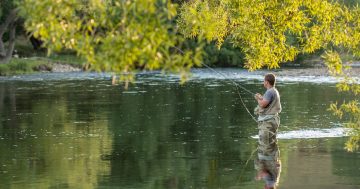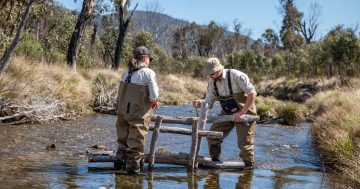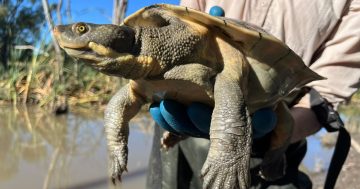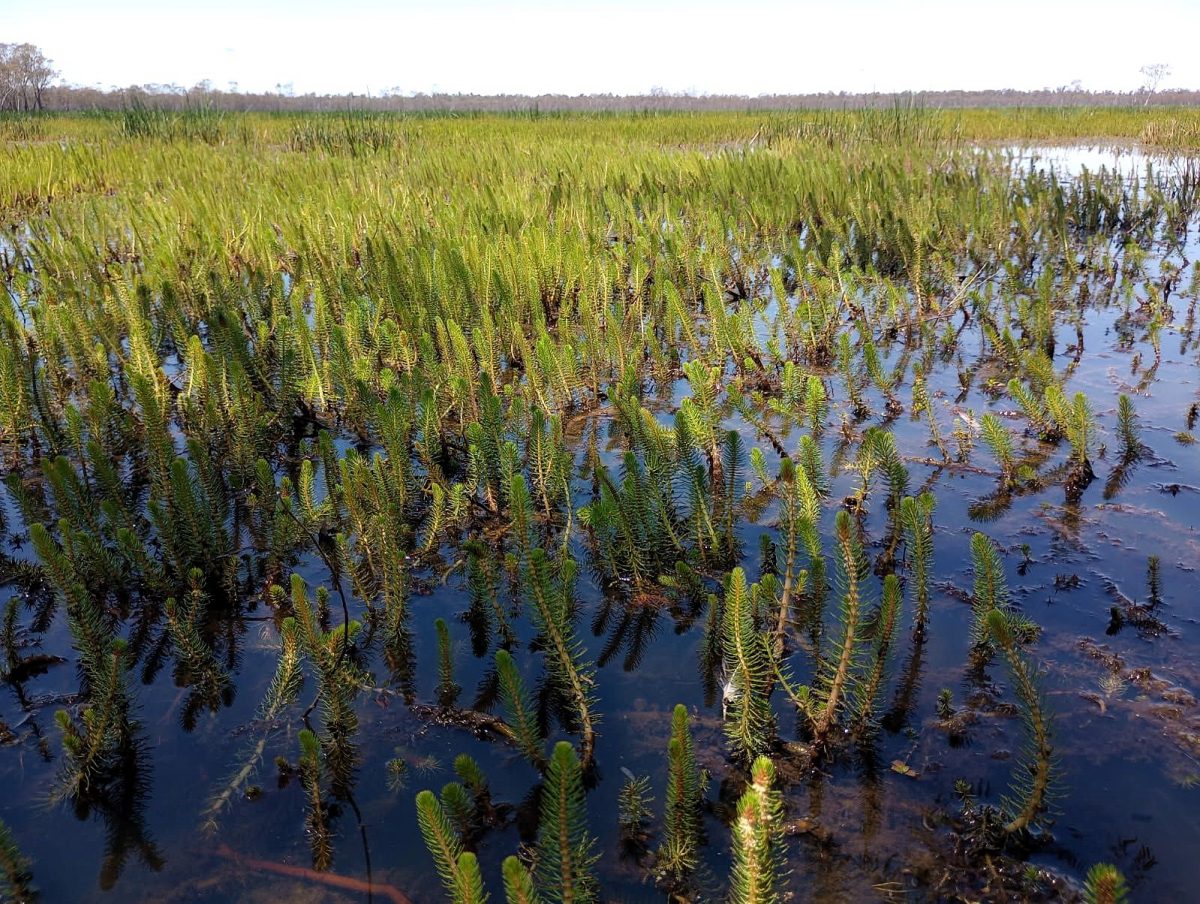
If you live in the Tumut catchment and have a dam or wetland that looks a bit like this, it might be the perfect habitat for the endangered southern pygmy perch. Photo: Sean Graham.
In the waterways surrounding the NSW Snowy Mountains town of Tumut, a dedicated team of conservationists is racing against time to save one of Australia’s most threatened native fish species.
The southern pygmy perch (Nannoperca australis), once abundant in these waters, now teeters on the brink of extinction as scientists scour the region’s dams, ponds, billabongs and wetlands in search of the perfect refuge for its survival.
Pygmy it may be in name and measure – at just six to eight centimetres in length – but the tiny perch plays a giant role in Australia’s freshwater ecosystems, its presence a strong indicator of healthy waterways, while its decline signals problems such as habitat loss, poor water quality or the spread of invasive species.
Visually distinctive with its orange, black, and speckled colouring, the southern pygmy perch feeds on aquatic invertebrates while, in turn, it’s favoured fare for Murray cod and Macquarie perch.
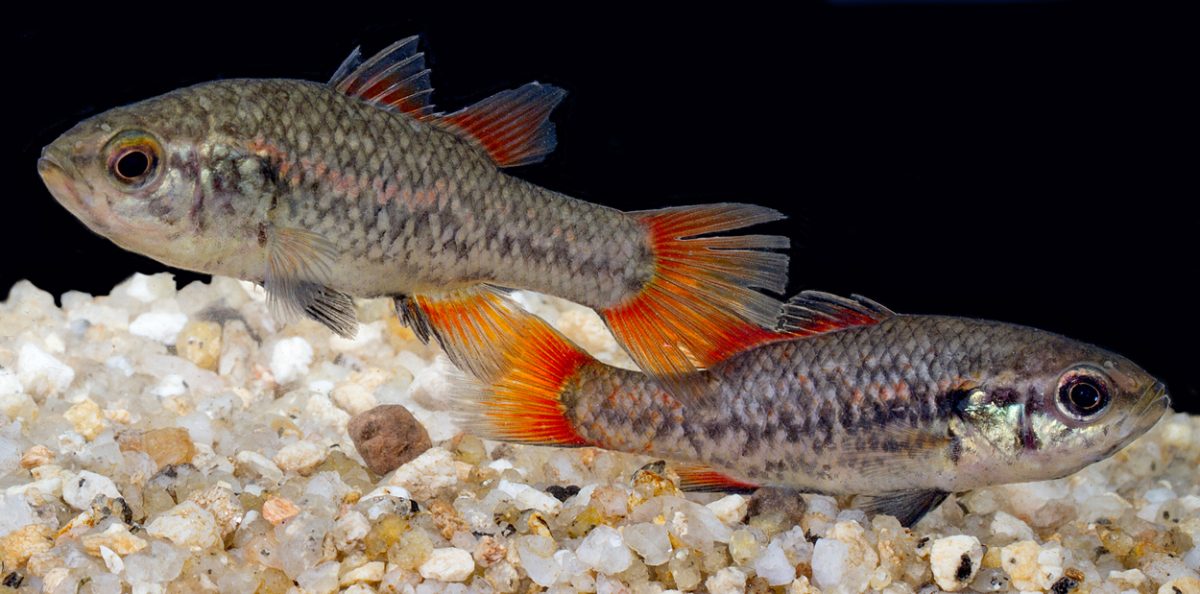
The southern pygmy perch with its distinctive rounded orange tail and notched dorsal fin. Photo: David Paul/Museums Victoria.
With a relatively short lifespan, the perch must reproduce successfully each season to maintain its populations – a challenge that has become increasingly difficult in recent decades.
Found in still or slow-flowing waters with abundant vegetation, the species once common in creeks, wetlands and floodplain billabongs throughout the Murray-Darling Basin, has experienced a dramatic decline across much of its range, particularly in NSW.
Factors driving this decline include prolonged droughts, habitat degradation, altered river flows and, most significantly, introduced fish species.
Redfin perch (Perca fluviatilis) actively hunt pygmy perch, while carp (Cyprinus carpio) destroy aquatic vegetation through their feeding behaviour, leaving the native fish with nowhere to hide or breed.
In NSW, southern pygmy perch are now found in three specific locations: a tributary of the Lachlan River, and two tributaries of the Murray River, with another population – thanks to conservation and translocation efforts – established near Boorowa.
To halt this trend, Australia’s fishing conservation charity OzFish Unlimited has turned its attention to the Tumut catchment, where they are casting a wide net for additional secure refuge sites.
The goal is to identify and restore wetlands, ponds and dams that can support long-term pygmy perch populations, free from the threats found in larger river systems, says Sean Graham, team leader of OzFish’s Dubbo River Repair Bus.
Yes, an actual bus. OzFish’s River Repair Buses are mobile restoration units designed to support on-the-ground conservation efforts across Australian waterways.
There are three buses in operation throughout the Murray-Darling Basin, used to transport volunteers, tools and equipment for activities such as weed control, litter clean-ups, revegetation and the construction of fish habitat structures.
They’ve also been put to use as teams systematically survey the Tumut region’s network of farm dams, natural ponds and remote water bodies in search of ideal sites.
“It needs to be deep enough to survive drought, have abundant aquatic vegetation and, most importantly, be isolated from waterways where invasive species dominate,” Sean said.
“While many dams and wetlands may look suitable, if they connect to creeks or rivers, even during floods, redfin and carp can eventually find their way in,” he said.
The involvement of local landowners is crucial to the search.
Many farmers and property owners in the Tumut region have intimate knowledge of their dams and ponds, often knowing instinctively whether a water body contains carp, based on water clarity and vegetation presence, Sean said.
“The strategy is not to rely on one or two perfect sites but to create a network of refuges,” he said. “That way, if one location fails — due to drought, predation, or another setback — others can still support the species.”
Sean said this “ark” approach had become a common tactic in conservation biology for managing small, threatened populations spread across fragmented habitats.
As the search continues, the conservation team will travel to Tumut in the coming weeks to start working on a parallel project set to lay a foundation for the reestablishment of the species in the region.
A local wetland is to be populated with habitat structures and native plants tailored to support southern pygmy perch.
Part of the plan is the construction of “fish hotels” – criss-crossed wooden beams, which look a bit like a hashtag (#) – placed on top of a cement base, to create a short-term shelter for native fish to inhabit until they grow stronger and move further downstream.
This type of low-cost intervention has already proven successful in the NSW Southern Tablelands, where a remnant population of southern pygmy perch was rediscovered in Oolong Creek near Dalton in 2021.
In partnership with Upper Lachlan Landcare and NSW DPI Fisheries, the project included fencing creek banks to prevent livestock damage, replanting native riparian vegetation, removing willows and other invasive weeds.
Fish hotels were also used to provide shelter and breeding habitat as captive-bred pygmy perch were released to boost local numbers and establish a resilient, self-sustaining population in the upper Lachlan catchment.
The Dalton project’s success has not only strengthened the local population but is now being used as a model for similar recovery efforts across the Murray-Darling Basin.
The future of the southern pygmy perch in the Tumut catchment, Sean says, depends on community feedback.
“Each suitable dam or pond discovered represents hope for a species on the brink,” Craig said, “and we need all the help we can get.”
People wishing to assist OzFish Breeding’s efforts in the Tumut catchment should contact it through its website.







